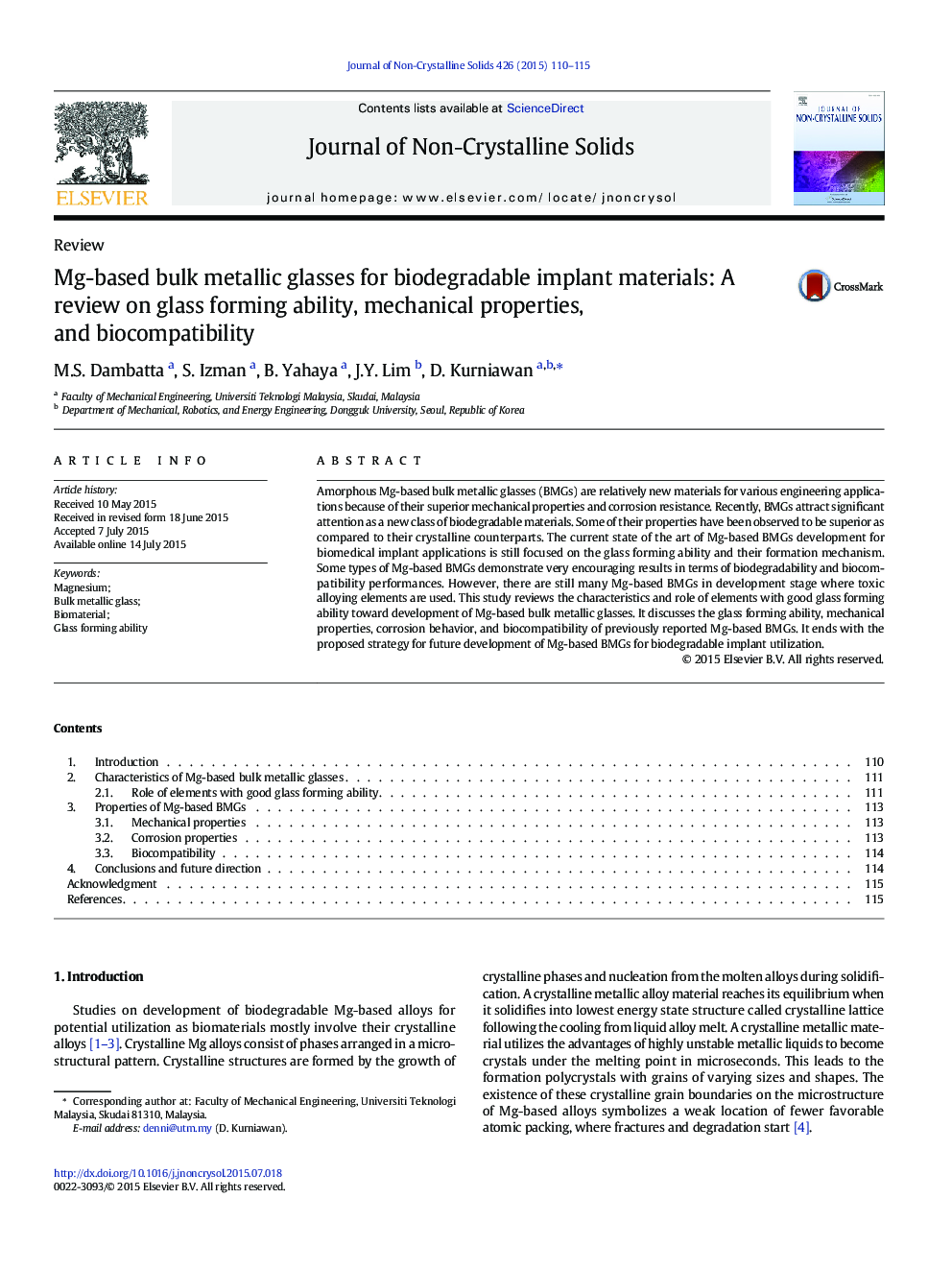| Article ID | Journal | Published Year | Pages | File Type |
|---|---|---|---|---|
| 1480612 | Journal of Non-Crystalline Solids | 2015 | 6 Pages |
•The glass forming ability, mechanical properties, corrosion behavior, and biocompatibility of Mg-based BMGs are reviewed.•Mg-based BMGs' mechanical properties are much higher than crystalline Mg-based alloys.•Degradation rates vary among Mg-based BMGs.•Many Mg-based BMGs contain toxic alloying elements. Alternatively, Ca and Zn can also be used.
Amorphous Mg-based bulk metallic glasses (BMGs) are relatively new materials for various engineering applications because of their superior mechanical properties and corrosion resistance. Recently, BMGs attract significant attention as a new class of biodegradable materials. Some of their properties have been observed to be superior as compared to their crystalline counterparts. The current state of the art of Mg-based BMGs development for biomedical implant applications is still focused on the glass forming ability and their formation mechanism. Some types of Mg-based BMGs demonstrate very encouraging results in terms of biodegradability and biocompatibility performances. However, there are still many Mg-based BMGs in development stage where toxic alloying elements are used. This study reviews the characteristics and role of elements with good glass forming ability toward development of Mg-based bulk metallic glasses. It discusses the glass forming ability, mechanical properties, corrosion behavior, and biocompatibility of previously reported Mg-based BMGs. It ends with the proposed strategy for future development of Mg-based BMGs for biodegradable implant utilization.
